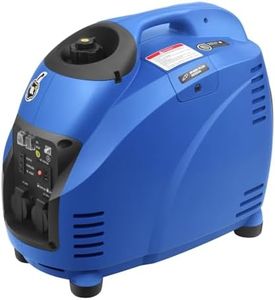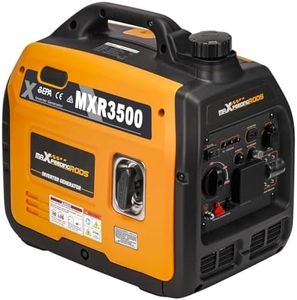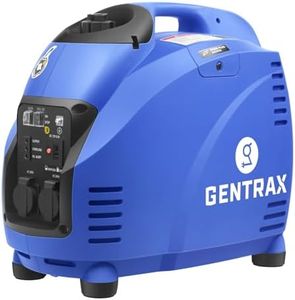We Use CookiesWe use cookies to enhance the security, performance,
functionality and for analytical and promotional activities. By continuing to browse this site you
are agreeing to our privacy policy
5 Best Small Quiet Generators
From leading brands and best sellers available on the web.By clicking on a link to a third party's website, log data is shared with that third party.
Buying Guide for the Best Small Quiet Generators
Choosing the right small, quiet generator can make all the difference whether you’re camping, preparing for power outages, or powering outdoor events. The key is to match your generator with your intended use, focusing on both its sound level and its size/output. By understanding the main specifications, you can pick a generator that won’t disturb the peace and is compact enough to store or transport easily.Power Output (Wattage)Power output, measured in watts, tells you how much electricity the generator can actually provide. This is important because every device you plug in will require a certain amount of watts to run. Generators generally come in several segments: low output (up to 1,000 watts) is best for phones, lights, and small devices; mid-range (1,000-2,000 watts) can handle a microwave or a portable fridge; while higher output for 'small' generators (2,000-3,500 watts) lets you run more or bigger devices at once. To pick the right one, make a list of what you want to power and add up the wattages—then pick a generator that can handle a bit more than that total.
Noise Level (dB)The noise level rating, measured in decibels (dB), tells you how loud the generator will be when operating. This is crucial for quiet environments, like campsites or neighborhoods. Generally, under 60 dB (about normal conversation) is considered quiet; 60-70 dB is moderate but could still be annoying in silent settings; above 70 dB becomes more noticeable and less suitable for quiet areas. Your ideal pick depends on your surroundings—if silence is critical, look for the lowest possible dB rating. Always check if the noise rating was measured at a certain distance, as that can affect real-world performance.
Size and WeightSize and weight determine how portable and easy to store the generator is. Small generators are valued for their convenience: those under 40 pounds can usually be carried by hand; 40-70 pounds might need two hands or wheeled movement; above that moves toward stationary use. If you need to move the generator frequently or have limited storage space, prioritize lighter and more compact models. Think about how far you’ll need to carry it and whether you’ll be transporting it in a vehicle or on foot.
Fuel TypeGenerators run on various fuels, such as gasoline, propane, or sometimes dual-fuel. Gasoline is easy to find but has safety concerns and a shorter shelf life; propane burns cleaner and stores longer but gives slightly less power; dual-fuel units offer flexibility and backup. Consider what fuel you have easy access to and which is safest and most practical for your environment—propane might be best for emergency backups, while gasoline is common for frequent use. Choose based on your convenience and likelihood of storing fuel.
RuntimeRuntime tells you how long the generator can run on a full tank of fuel at a specific load (often at 25% or 50% of maximum power). This matters because it determines how often you’ll need to refuel, which is key for overnight use or longer events. Short runtimes (up to 6 hours) mean more frequent stops for refueling; mid-range (6-10 hours) can cover a night or an event; longer runtimes (10+ hours) are best for reliable overnight or day-long operation. Choose a model that can last as long as you typically need it running without a break.
Inverter TechnologyInverter generators use special electronics to provide cleaner, more stable power with less noise. This is very important for sensitive electronics like laptops, phones, or medical devices. Generators with inverter tech are usually quieter and more fuel efficient, making them great for camping or as backup for electronics. If you expect to run devices that don’t like power surges, always pick an inverter generator.







